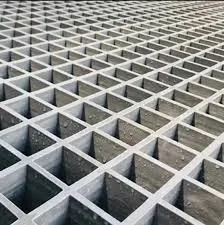
-
 Afrikaans
Afrikaans -
 Albanian
Albanian -
 Amharic
Amharic -
 Arabic
Arabic -
 Armenian
Armenian -
 Azerbaijani
Azerbaijani -
 Basque
Basque -
 Belarusian
Belarusian -
 Bengali
Bengali -
 Bosnian
Bosnian -
 Bulgarian
Bulgarian -
 Catalan
Catalan -
 Cebuano
Cebuano -
 China
China -
 China (Taiwan)
China (Taiwan) -
 Corsican
Corsican -
 Croatian
Croatian -
 Czech
Czech -
 Danish
Danish -
 Dutch
Dutch -
 English
English -
 Esperanto
Esperanto -
 Estonian
Estonian -
 Finnish
Finnish -
 French
French -
 Frisian
Frisian -
 Galician
Galician -
 Georgian
Georgian -
 German
German -
 Greek
Greek -
 Gujarati
Gujarati -
 Haitian Creole
Haitian Creole -
 hausa
hausa -
 hawaiian
hawaiian -
 Hebrew
Hebrew -
 Hindi
Hindi -
 Miao
Miao -
 Hungarian
Hungarian -
 Icelandic
Icelandic -
 igbo
igbo -
 Indonesian
Indonesian -
 irish
irish -
 Italian
Italian -
 Japanese
Japanese -
 Javanese
Javanese -
 Kannada
Kannada -
 kazakh
kazakh -
 Khmer
Khmer -
 Rwandese
Rwandese -
 Korean
Korean -
 Kurdish
Kurdish -
 Kyrgyz
Kyrgyz -
 Lao
Lao -
 Latin
Latin -
 Latvian
Latvian -
 Lithuanian
Lithuanian -
 Luxembourgish
Luxembourgish -
 Macedonian
Macedonian -
 Malgashi
Malgashi -
 Malay
Malay -
 Malayalam
Malayalam -
 Maltese
Maltese -
 Maori
Maori -
 Marathi
Marathi -
 Mongolian
Mongolian -
 Myanmar
Myanmar -
 Nepali
Nepali -
 Norwegian
Norwegian -
 Norwegian
Norwegian -
 Occitan
Occitan -
 Pashto
Pashto -
 Persian
Persian -
 Polish
Polish -
 Portuguese
Portuguese -
 Punjabi
Punjabi -
 Romanian
Romanian -
 Russian
Russian -
 Samoan
Samoan -
 Scottish Gaelic
Scottish Gaelic -
 Serbian
Serbian -
 Sesotho
Sesotho -
 Shona
Shona -
 Sindhi
Sindhi -
 Sinhala
Sinhala -
 Slovak
Slovak -
 Slovenian
Slovenian -
 Somali
Somali -
 Spanish
Spanish -
 Sundanese
Sundanese -
 Swahili
Swahili -
 Swedish
Swedish -
 Tagalog
Tagalog -
 Tajik
Tajik -
 Tamil
Tamil -
 Tatar
Tatar -
 Telugu
Telugu -
 Thai
Thai -
 Turkish
Turkish -
 Turkmen
Turkmen -
 Ukrainian
Ukrainian -
 Urdu
Urdu -
 Uighur
Uighur -
 Uzbek
Uzbek -
 Vietnamese
Vietnamese -
 Welsh
Welsh -
 Bantu
Bantu -
 Yiddish
Yiddish -
 Yoruba
Yoruba -
 Zulu
Zulu
grp duct system
Understanding the GRP Duct System
The Glass Reinforced Plastics (GRP) duct system is increasingly gaining popularity in various industries due to its remarkable properties and advantages over traditional materials. GRP, commonly known as fiberglass, is a composite material made from a polymer matrix reinforced with glass fibers. This combination results in a lightweight yet incredibly strong material that is ideal for use in ductwork and ventilation systems.
Understanding the GRP Duct System
In addition to corrosion resistance, the GRP duct system boasts a smooth internal surface, which reduces friction losses in airflow. This streamlined design enhances the efficiency of air movement, leading to lower energy consumption and reduced operational costs. Moreover, the lightweight nature of GRP means that installation is more straightforward and requires less labor compared to heavier materials like steel or concrete.
grp duct system

Another important aspect of GRP is its thermal insulation properties. The composite material provides excellent thermal resistance, which helps maintain the desired temperature within the duct system. This is particularly advantageous in HVAC (heating, ventilation, and air conditioning) applications, where temperature control is crucial for comfort and efficiency.
Furthermore, GRP ducts are available in various shapes and sizes, making them versatile for a range of applications. Whether it's a straight duct, bend, or custom fittings, GRP can be tailored to meet specific requirements. This flexibility simplifies the design and engineering process when constructing new systems.
The environmental impact of GRP should also be highlighted. As a material, fiberglass is highly durable, which means it has a longer lifecycle, reducing the need for frequent replacements. Additionally, GRP products can be manufactured to comply with stringent environmental regulations, reflecting a growing focus on sustainability in construction and manufacturing.
In conclusion, the GRP duct system represents a significant advancement in ductwork technology, combining strength, efficiency, and environmental consciousness. As industries continue to seek durable and effective solutions for air management, GRP is poised to remain a favored choice, paving the way for enhanced performance in various applications. With ongoing innovations and improvements, the future of GRP ducts looks promising, making them essential components of modern infrastructure.









